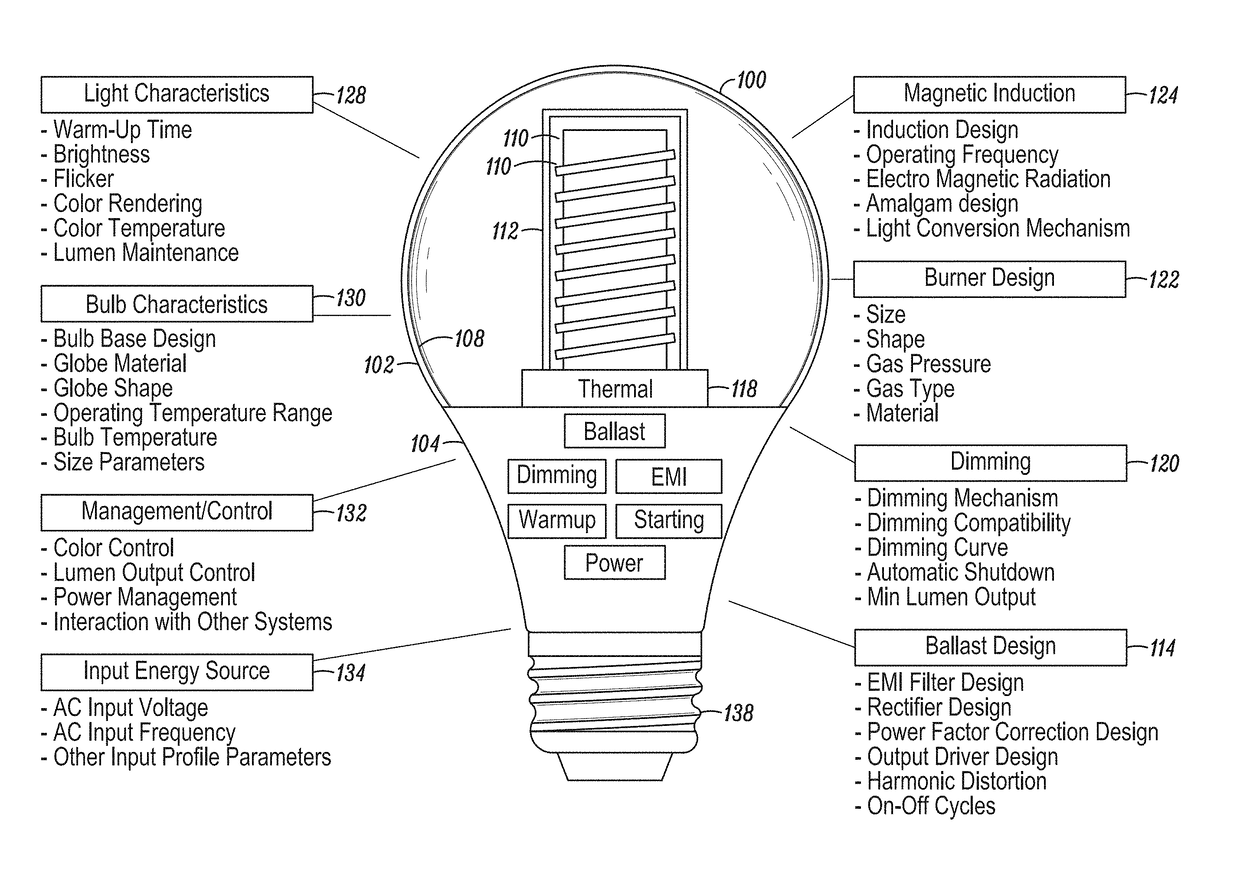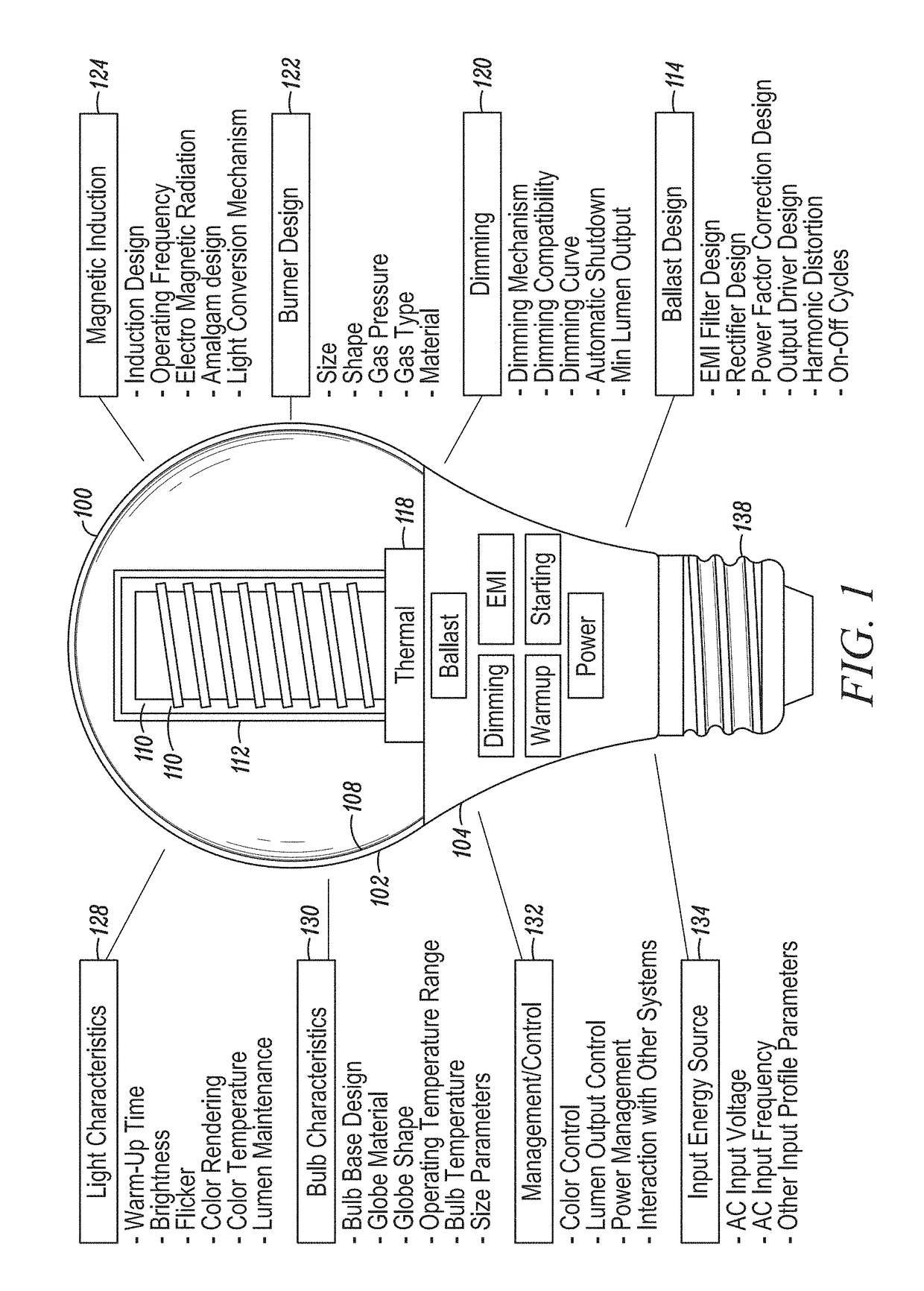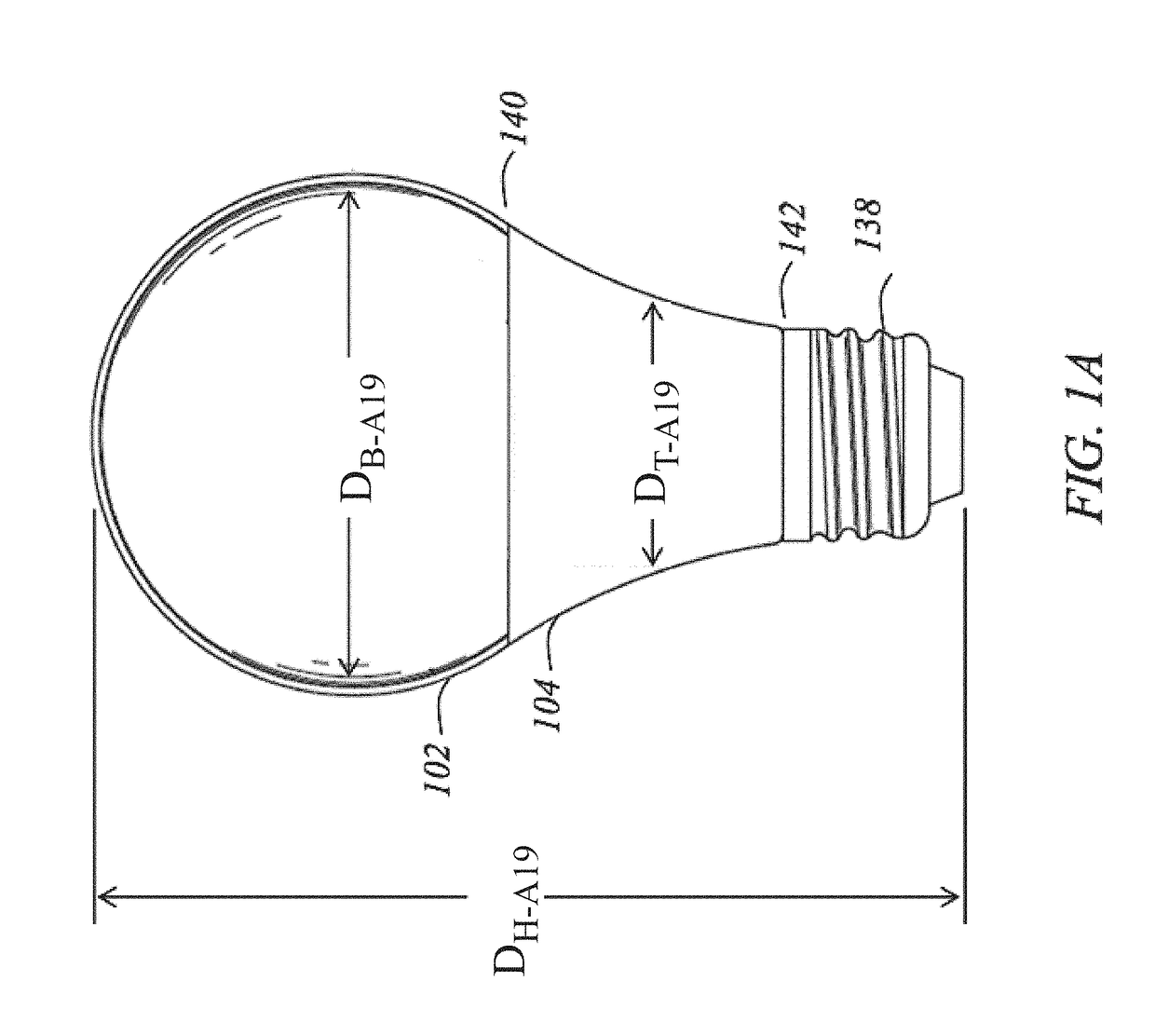Dimmable induction RF fluorescent lamp with reduced electromagnetic interference
a fluorescent lamp and electromagnetic interference technology, applied in the field of electromagnetic interference reduction, can solve the problems of long lamp structure, poor fit for replacing conventional incandescent lamps, and the use of electrodes can create certain problems, so as to reduce power consumption and noise, and reduce the flicker of lamps
- Summary
- Abstract
- Description
- Claims
- Application Information
AI Technical Summary
Benefits of technology
Problems solved by technology
Method used
Image
Examples
Embodiment Construction
[0064]An induction-driven electrodeless discharge lamp, hereafter referred to synonymously as an induction lamp, an electrodeless lamp, or an electrodeless fluorescent lamp, excites a gas within a lamp envelope through an electric field created by a time-varying magnetic field rather than through electrically conductive connections (such as electrodes) that physically protrude into the envelope. Since the electrodes are a limiting factor in the life of a lamp, eliminating them potentially extends the life that may be expected from the light source. In addition, because there are no metallic electrodes within the envelope, the burner design may employ high efficiency materials that would otherwise react with the electrodes, such as bromine, chlorine, iodine, and the like, and mixtures thereof, such as sodium iodide and cerium chloride. Embodiments described herein disclose an inductor mounted inside a re-entrant cavity protruding upward within the burner envelope, where the inductor ...
PUM
 Login to View More
Login to View More Abstract
Description
Claims
Application Information
 Login to View More
Login to View More - R&D
- Intellectual Property
- Life Sciences
- Materials
- Tech Scout
- Unparalleled Data Quality
- Higher Quality Content
- 60% Fewer Hallucinations
Browse by: Latest US Patents, China's latest patents, Technical Efficacy Thesaurus, Application Domain, Technology Topic, Popular Technical Reports.
© 2025 PatSnap. All rights reserved.Legal|Privacy policy|Modern Slavery Act Transparency Statement|Sitemap|About US| Contact US: help@patsnap.com



